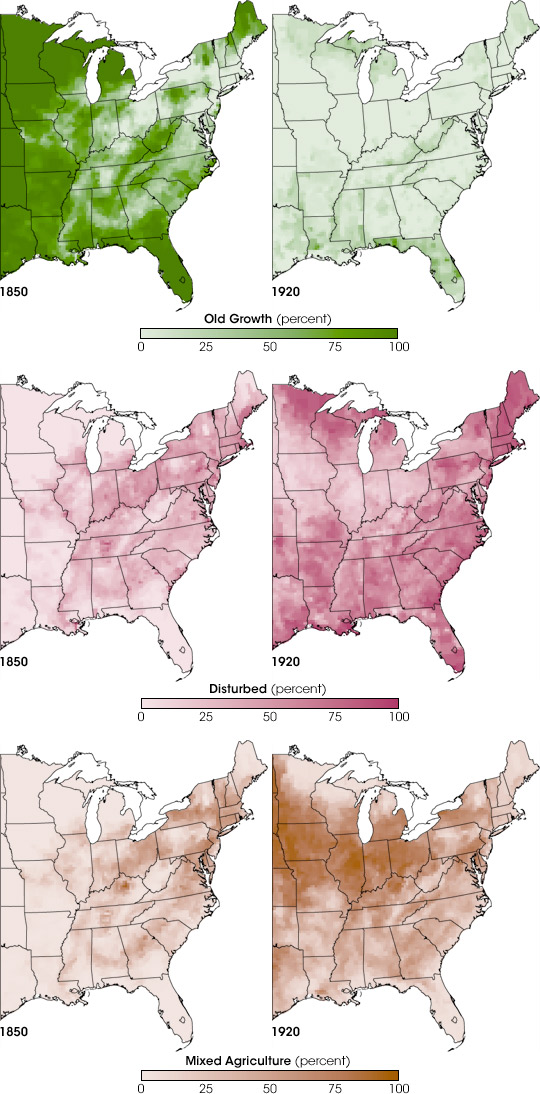


Who hasn’t walked through a groomed park, a yard, or a city street, or gazed across acres of crops or rows of buildings and wondered, “What did this look like before?” What would nature produce if humanity had not intervened? Climate scientists take the question one step farther. Climate scientists ask, when you change what’s growing over a large area like the eastern half of the United States, what does that do to the weather?
To give scientists some fresh tools to answer that question, Louis Steyaert, a climate and atmospheric scientist visiting NASA Goddard Space Flight Center from the U.S. Geological Survey, and Robert Knox, an ecologist at NASA Goddard Space Flight Center, recently completed a series of maps that describe land cover in the East in 1650, 1850, 1920, and 1992. These images show land use in 1850 and 1920. The top images show how much of the land still supported old growth vegetation (forest, grassland, wetland, etc.); the center images show the intensity of human disturbance; and the bottom images show where agriculture was concentrated.
The transformation from dark green to white between 1850 and 1920 in the top pair of images documents the dramatic development of the United States after the Civil War. In the span of a single lifetime, seventy years, the eastern United States went from being largely covered in old growth vegetation to having almost no old growth. The center images tell the same story in reverse. Areas where the land was not being used in any way are white, while intensive land use, such as cities, agriculture, and logging, is shown in red. In 1850, land east of the Mississippi River had been disturbed, with the greatest land use in the northeast, while land west of the Mississippi remained largely untouched. By 1920, nearly all of the land cover had been disturbed to some degree. The lower images show one of the most significant land uses, agriculture. Agriculture, like the U.S. population, was concentrated on the eastern seaboard in 1850. By 1920, farms had moved into the Midwest, and some Eastern farms were abandoned, particularly in New England and the Mid-Atlantic.
The scientists mapped changes over time by starting with maps of potential vegetation—the type of vegetation that would naturally grow in a location based on characteristics like climate and soil type. Using potential vegetation maps, census records, historical surveys, and satellite data, they reconstructed how the landscape has changed since settlement. The land use maps were an intermediate step toward describing changes in climate-relevant characteristics of the landscape—such as canopy height, soil moisture, and the amount of sunlight reflected by the surface. To read more about Steyaert and Knox’s work, see Ancient Forest to Modern City on the Earth Observatory.
Maps by Jesse Allen and Robert Simmon, based on data from Louis Steyaert and Robert Knox. Caption by Holli Riebeek.